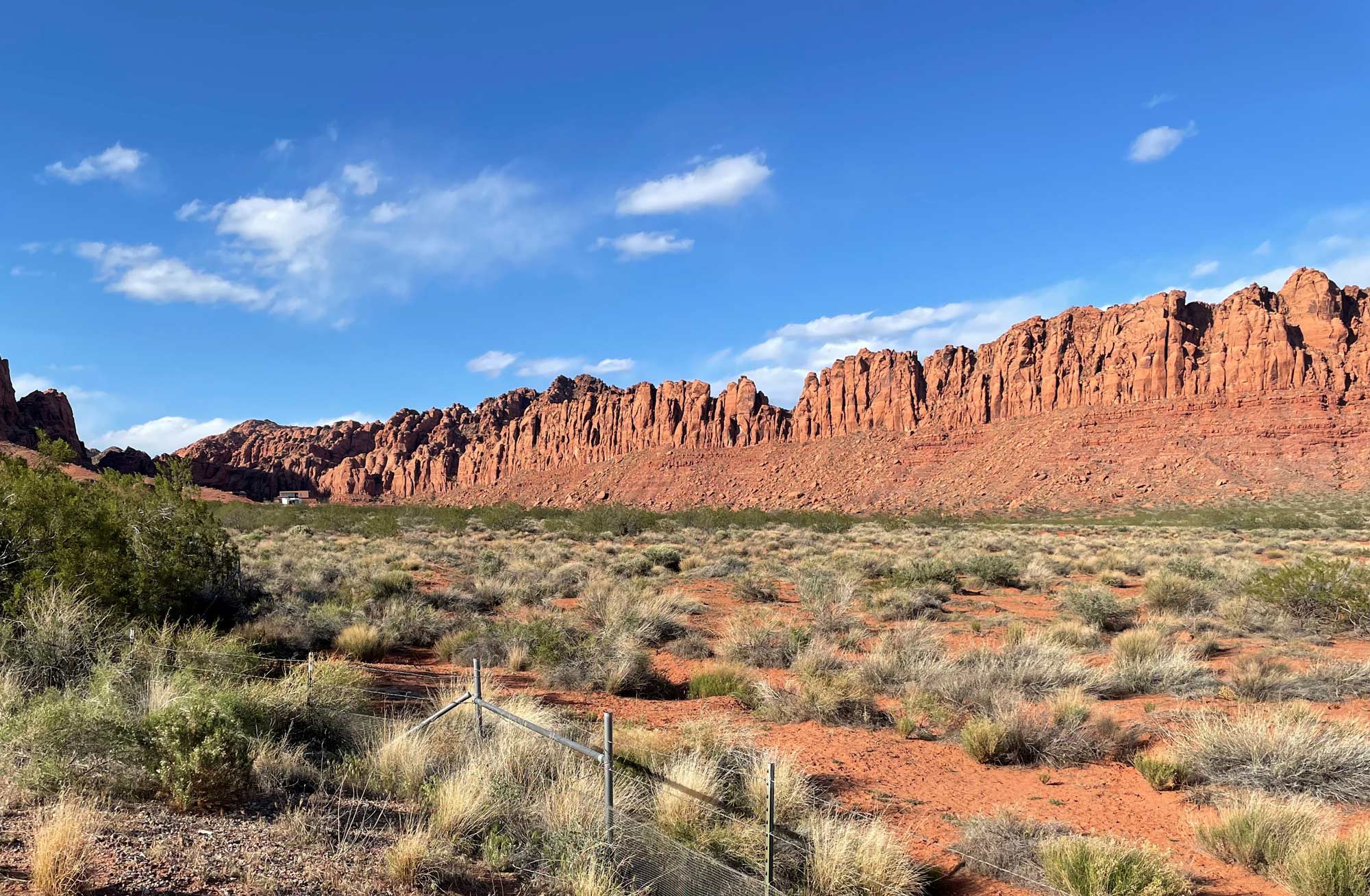

A pallet of red sandstone is Southern Utah’s backdrop. There’s a reason old-timers still call it, Color Country; Mother Nature’s brush redecorates year after year, season after season. Pallets of green, gold, sage, orange, red, pink, vermillion, and every other color in the rainbow play together here.
The high desert holds so many mysteries, but the reason for the red dirt isn’t one of them. And, if there is one thing we love in Color Country, it’s red dirt. Did you know sandstone appears to change colors with the sunlight? When the sun shines directly on it, that red sand can begin to glow and progressively turn as gold as honey (but with sparkle).
No, the reason for the red dirt is no mystery. The soil on our earth contains trace minerals. Wild About Utah, wildaboututah.org, published an article revealing one of our best secrets: “The red, brown, and yellow colors so prevalent in southern UT result from the presence of oxidized iron–that is iron that has undergone a chemical reaction upon exposure to air or oxygenated water. The iron oxides released from this process form a coating on the surface of the rock or rock grains containing the iron.”
Have you ever accidentally left your best Dutch oven outside for even just a few days. The oven would be left to the elements. The longer it’s exposed, the more the iron oxidizes. The same thing happens to sandstone and shale when exposed to the elements for an extended period of time.
An article published on www.nps.gov titled: “Capitol Reef” said the contrasting green rocks we sometimes see in the vicinity are colored because, “Oxidized iron results in red coloring and indicates a dry paleo-environment and reduced iron, produced in swampy or boggy conditions, gives the rock a green tint.”
There are many uses for red sand
Ancient inhabitants of the high desert and Native Americans that followed found many uses for red sand. With the right level of moisture mixed in with the sand, they could use it to paint messages inside caves and on other hard surfaces where they were likely to be protected, but seen.
Some made a poultice colored by the oxidized iron to create a dye. Others learned to shape wet sand into molds for jewelry-making. Hot precious metals were melted and poured into the sandstone mold. Eventually, they used it to create and color pottery. Shale was used to make tools and weapons. The red sand was frequently used the way we use “sandpaper” today.
The sandstone became a key element in construction. Sandstone bricks were easy to make and dried hard. Yet, the stone was soft enough for carving delicate designs. Members of the Church of Jesus Christ of Latter-day Saints built an entire temple in St. George with sandstone bricks. They then plastered it with a white finish. It took the locals more than five and a half years to complete the temple. It was finished in 1877 and still stands proudly today. St. George Temple is the oldest Latter-day Saint Temple in active use. It was the third built by the church and the first built in Utah. Public tours of the temple grounds and information center are available. The temple is located at 250 E. 400 S., St. George, UT 84770. To learn more, visit https://newsroom.churchofjesuschrist.org and search “St. George” as the temple is temporarily closed for what has been a 2-year renovation.
Other historic buildings in the downtown area such as the Latter-day Saints’ St. George Tabernacle at 18 S Main St, St. George, UT 84770, and the Woodward School at 76 W Tabernacle St, St. George, UT 84770 are two more fine examples of sandstone brick masonry.
- 8 Tips To Investing In Utahs Real Estate Market
- Thriving New Home Market In Utah
- Does Water Heater Increase Home Values
- Unlocking The Secrets To Finding Discounted Rental Properties
- Should You Listen To Dave Ramsey And Buy A House Now
- The Best Places To Live In Utah 2024
- What Utah Parents Need To Know About Local Schools
- July 2023 Housing Market Update
- 10 Strategies To Paying Off Your Mortgage Faster
- 5 Impactful Negotiation Tips When Receiving A Cash Offer
- How Quick Home Sales Benefit Sellers And Communities
- Utah Real Estate Is A Builder Bubble On The Horizon








